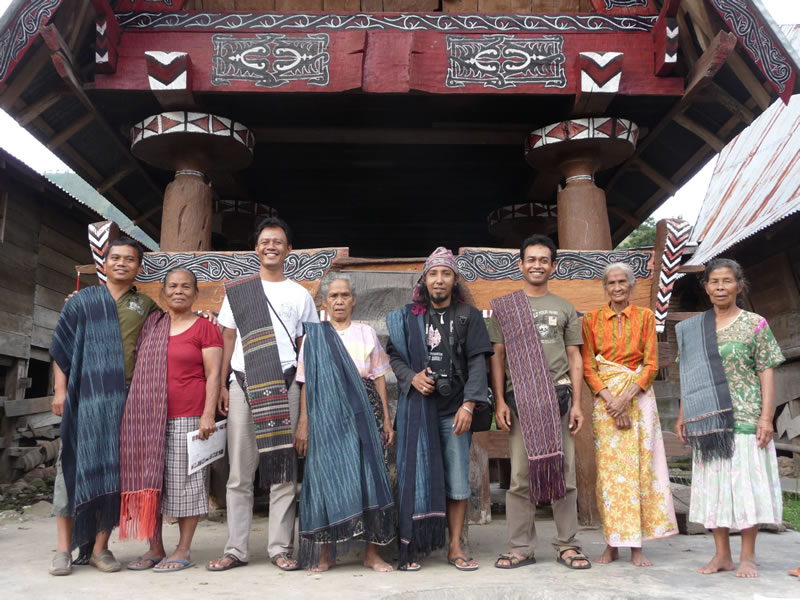Reviving Textiles of the Batak Toba

Lake Toba is the largest lake on any island in the world. The lake was formed by one of history’s biggest volcanic eruptions
Sumatra is the sixth largest island in the world and home to many ethnic groups speaking more than 50 different languages. Batak is a term that actually includes several ethnic groups found in Northern Sumatra near Lake Toba, and includes the Toba, Karo, Pakpak, Simalungun, Angkola and Mandailing Batak. Each have distinct languages and customs. Historically, local textiles (ulos) have reflected these ethnic differences but today there is much innovation with designs moving across all groups.
Threads of Life has always dreamed of finding weavers to work with in Sumatra, given the island’s interesting culture and beautiful textiles. In 2010, Sandra Niessen presented us with a copy of her book, Legacy in Cloth: Batak Textiles of Indonesia (www.bataktextiles.com). This remarkable book, at 3 kg (6.5 lb), contains 570-pages of Sandra’s detailed research on Batak textile traditions, including unparalleled analysis of weaving techniques.

Sandra Niessen on Samosir Island in Lake Toba

Threads of Life YPBB team with weavers on Samosir Island
With Sandra’s help, Threads of Life and the YPBB Foundation received a 2-year grant from the Netherland Embassy in Jakarta to build weavers’ cooperatives and open markets for Batak weavers. With this funding Sandra and a team from Threads of Life and the YPBB Foundation traveled together in November 2010 to explore the possibility of reviving the textile arts documented in Sandra’s book.
The weavers we found were mostly older women living in the small hamlets around Lake Toba. Though beautiful, these communities are virtually deserted. Parents have sought a better education and a better life for their children than they had. These children, when grown, have found jobs in Jakarta or Surabaya. As the villages decline, so is the Batak culture. Elsewhere, Threads of Life has found that offering women a good income from staying in the village empowers them to choose between the big cities and their village.

Maliana Boru Silalahi wearing a textile that she wove when she was young

Nurhaeda Boru Siregar in Muara weaving a Harungguan textile
South of Lake Toba we found women still interested in weaving for their own cultural needs. While still using a traditional backstrap loom the weavers use synthetic dyes and have abandoned some of the lovely supplementary techniques found on old cloths. One of the cloths that is being woven is called a Harungguan which is only worn by a high caste man as a shoulder or hip cloth. It is said that each stripe contains motifs and colors of all the other Batak textiles, which is what makes it so valuable. Sandra noted more than 20 different types of textiles reporesented in a Harungguan. I cannot help but thinking it is as though they are storing their reportoire of textiles in this one textile until there is a time that they may be woven again.
In March 2011 Pung and Frog headed back to this weaving area and worked with weavers to make natural red dyes using Morinda. Since our first visit the weavers have already started producing indigo blue dye again. Pung and Frog, who are both natural dyers, helped them improve their recipe for blue and begin to make red. According to Sandra’s researach, red dye was usually done in Porsea rather than this area.

Frog (left) with weavers starting to cut up Morinda roots for red dyeing

Weavers who participated in a workshop with Pung and Frog (back row)
Some of these weavers will be coming to Bali to attend another workshop in natural dyeing as well as setting up strong structures of management in forming a cooperative. Other Threads of Life weavers will also be attending so it is our hope that Batak weavers will find the support and encouragement they need to revive both the textile vocubulary locked away in the Harungguan and the vibrant culture these textile arts represent.

